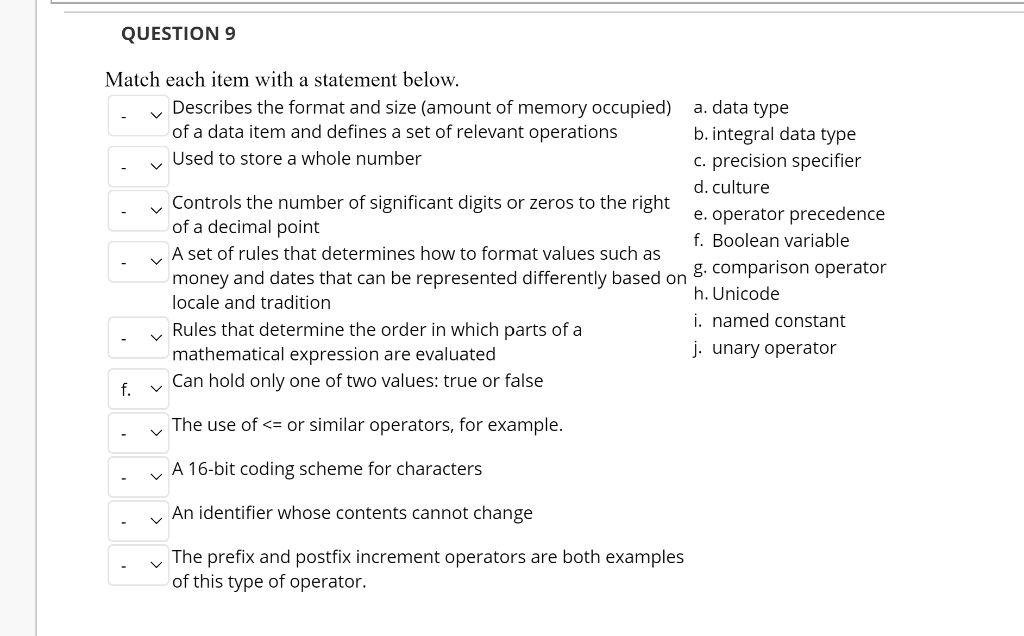Match Each Item With The Clean Water Regulation It Describes
Want to stay informed about the clean water regulations that are shaping our environment? We've got you covered! Take a look at the different regulations below and find out how they are impacting our water resources.
EPA to announce repeal of Obama-era clean water regulation

The Environmental Protection Agency (EPA) has recently announced its decision to repeal the Obama-era clean water regulation. This regulation, commonly known as the Clean Water Rule, aimed to clarify which bodies of water would be protected under the Clean Water Act.
However, critics argued that the rule was overreaching and posed an unnecessary burden on landowners and businesses. Proponents, on the other hand, saw it as a crucial step in safeguarding our water resources against pollution and degradation.
Reynolds, Pillen, Noem sign letter to Biden opposing new clean water regulation

In a letter addressed to President Biden, several state leaders, including Reynolds, Pillen, and Noem, expressed their opposition to a new clean water regulation currently under consideration. The proposed rule seeks to enhance protections for small streams and wetlands, which were not explicitly covered by previous regulations.
Opponents argue that this rule would result in excessive government control and limit individual property rights. Supporters, however, assert that these waters play a vital role in maintaining the overall health of our ecosystems and need adequate protection.
Understanding the Impact of Clean Water Regulations on Our Watersheds
Our watersheds are crucial ecosystems that provide habitat for diverse species and supply us with freshwater. Clean water regulations play a significant role in maintaining the health and integrity of these important natural resources.
1. Regulation A: Protecting Drinking Water Sources
This regulation focuses on safeguarding our drinking water sources from pollution and contamination. It sets strict standards for wastewater treatment plants, industrial discharges, and agricultural practices to ensure that our tap water is safe to consume. This regulation aims to prevent diseases and health risks associated with contaminated drinking water.
2. Regulation B: Preserving Wetlands and Aquatic Ecosystems
Regulation B concentrates on preserving and restoring wetlands and aquatic ecosystems. These areas play a crucial role in supporting biodiversity, reducing flood risks, and filtering pollutants, among other ecosystem services. This regulation aims to mitigate the loss and degradation of these habitats, contributing to the overall health of our water systems.
3. Regulation C: Controlling Industrial Pollution
This regulation targets industrial polluters, setting limits on the discharge of harmful substances into our waterways. It seeks to prevent pollutants such as heavy metals, chemicals, and toxins from contaminating our rivers, lakes, and streams. By reducing industrial pollution, this regulation helps protect aquatic life and maintain the quality of our water resources.
Frequently Asked Questions (FAQ)
Here are some common questions regarding clean water regulations:
Q: Why are clean water regulations necessary?
A: Clean water regulations are necessary to protect and maintain the quality of our water resources. They ensure that our lakes, rivers, and aquifers remain free from pollution, preserving aquatic ecosystems and promoting public health.
Q: Do clean water regulations impose excessive burdens on businesses and landowners?
A: Critics argue that clean water regulations can impose burdensome requirements on businesses and landowners. However, proponents argue that these regulations are essential to prevent environmental degradation and ensure the sustainable use of water resources.
Q: How can individuals contribute to clean water conservation?
A: Individuals can contribute to clean water conservation by adopting water-saving practices, properly disposing of waste, and supporting organizations working towards water protection and restoration. Additionally, being mindful of our consumption and the impact of our actions on water resources is crucial.
Q: Who is responsible for enforcing clean water regulations?
A: Clean water regulations are enforced by various governmental entities, such as the Environmental Protection Agency (EPA) in the United States. State agencies, local authorities, and environmental organizations also play a role in ensuring compliance with these regulations.
As we navigate the complex world of clean water regulations, it's essential to stay informed and engaged. By understanding the different regulations in place and their implications, we can collectively work towards protecting and preserving our precious water resources for future generations.
Solved QUESTION 9 V Match Each Item With A Statement Below. | Chegg.com
 Image Source : www.chegg.com
Image Source : www.chegg.com Match Each Item With Its Most Appropriate Means Of Disposal, Used
 Image Source : www.homeworklib.com
Image Source : www.homeworklib.com Solved QUESTION 1 Match Each Item With Its Function In Our | Chegg.com
 Image Source : www.chegg.com
Image Source : www.chegg.com 15 Tweets Reacting To The EPA's Clean Water Regulation | NFIB | Clean
 Image Source : www.pinterest.com
Image Source : www.pinterest.com Match Each Item To The Phrase That Best Describes It
 Image Source : gunnernewsingram.blogspot.com
Image Source : gunnernewsingram.blogspot.com Solved Match Each Item With Its Use In The Process Of DNA | Chegg.com
 Image Source : www.chegg.com
Image Source : www.chegg.com EPA To Announce Repeal Of Obama-era Clean Water Regulation - YouTube
 Image Source : www.youtube.com
Image Source : www.youtube.com Reynolds, Pillen, Noem Sign Letter To Biden Opposing New Clean Water
 Image Source : www.msn.com
Image Source : www.msn.com Solved question 1 match each item with its function in our. Reynolds, pillen, noem sign letter to biden opposing new clean water. Match each item with its most appropriate means of disposal, used. Match each item to the phrase that best describes it. Epa to announce repeal of obama-era clean water regulation